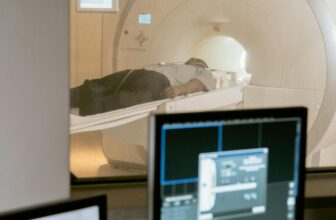Understanding the Importance of Proper Disposal and Recycling
As the owner of a mobility scooter, it’s essential to understand the importance of properly disposing of and recycling your scooter’s parts. Not only does this help protect the environment, but it also ensures that valuable resources are reused in the production of new products. In this article, we’ll explore the best practices for disposing of and recycling various mobility scooter components, including batteries, tires, and electronic components.
By following these guidelines, you’ll be doing your part to reduce waste, conserve resources, and promote a more sustainable future for our planet. So, let’s dive in and learn how to properly dispose of and recycle your mobility scooter parts.
Disposing of Mobility Scooter Batteries
Why Battery Disposal Matters
One of the most critical components of your mobility scooter is its battery. These batteries, typically lead-acid or lithium-ion, contain hazardous materials that can harm the environment and pose a risk to public health if not disposed of correctly. Therefore, it’s essential to follow proper disposal procedures to prevent pollution and protect our ecosystems.

How to Dispose of Lead-Acid Batteries
Lead-acid batteries are commonly used in mobility scooters due to their affordability and reliability. However, they contain toxic materials like lead and sulfuric acid, which can be harmful if released into the environment. To properly dispose of a lead-acid battery, follow these steps:

- Locate a battery recycling facility near you. Many auto parts stores, recycling centers, and even some retailers offer battery recycling services.
- Transport the battery to the recycling facility, ensuring it’s securely placed in a leak-proof container to prevent spills.
- Hand over the battery to the recycling facility staff, who will ensure it’s recycled responsibly and safely.
How to Dispose of Lithium-Ion Batteries
Lithium-ion batteries are becoming increasingly popular in mobility scooters due to their lightweight design and long-lasting power. However, they also require special care when it comes to disposal. To properly dispose of a lithium-ion battery, follow these steps:

- Find a recycling facility that accepts lithium-ion batteries. Many electronics retailers and recycling centers offer this service.
- Transport the battery to the recycling facility, ensuring it’s securely placed in a non-conductive container to prevent short-circuiting.
- Hand over the battery to the recycling facility staff, who will ensure it’s recycled responsibly and safely.
Disposing of Mobility Scooter Tires
Like any other vehicle, mobility scooters require regular tire maintenance and replacement. When it’s time to replace your scooter’s tires, it’s essential to dispose of the old ones responsibly. Many tire retailers and recycling centers accept used tires for recycling, where they can be repurposed into new products like rubber mulch or playground surfaces. To properly dispose of your mobility scooter tires, simply transport them to a participating recycling facility or retailer and hand them over for recycling.

Disposing of Electronic Components
Mobility scooters contain various electronic components, such as motors, controllers, and wiring. When these parts reach the end of their lifespan, it’s crucial to dispose of them responsibly to prevent electronic waste from entering landfills and harming the environment. Many electronics recycling facilities accept these components and ensure they’re recycled or disposed of safely. To properly dispose of your scooter’s electronic components, locate a nearby electronics recycling facility and transport the parts there for responsible disposal.
Recycling Mobility Scooter Frames and Metal Parts
The frame and metal components of your mobility scooter can often be recycled, as they’re typically made from materials like aluminum, steel, or other metals. To recycle these parts, locate a metal recycling facility near you and transport the components there for recycling. By doing so, you’ll be contributing to a more sustainable future by ensuring these valuable materials are reused in new products.
Donating or Selling Functional Mobility Scooter Parts
If you have functional mobility scooter parts that you no longer need, consider donating or selling them to someone who can use them. Many organizations and individuals are in need of affordable mobility scooter parts, and your donation or sale can make a significant difference in someone’s life. Check with local disability organizations, senior centers, or online marketplaces to find potential recipients for your functional mobility scooter parts.
Final Thoughts on Proper Disposal and Recycling
Properly disposing of and recycling your mobility scooter parts is an essential responsibility for all scooter owners. By following the guidelines outlined in this article, you’ll be doing your part to protect the environment, conserve resources, and promote a more sustainable future. Remember, every small action counts when it comes to making a positive impact on our planet.





